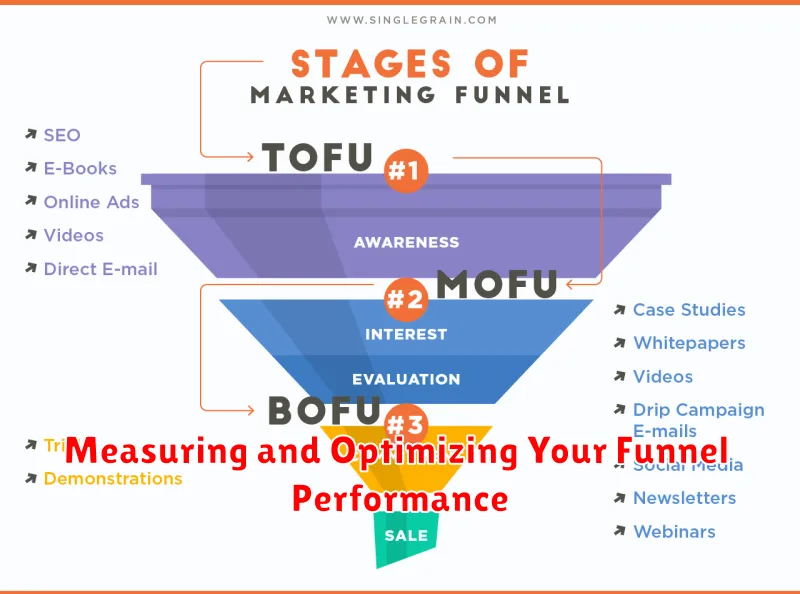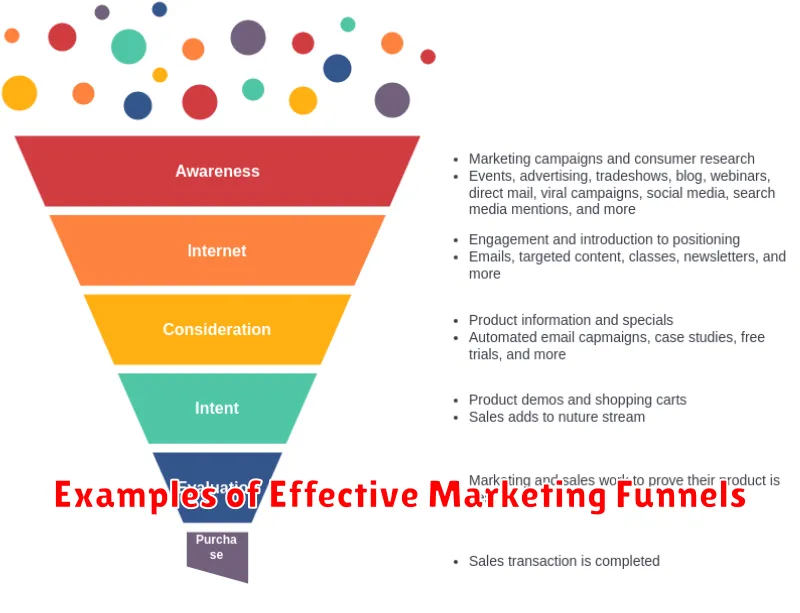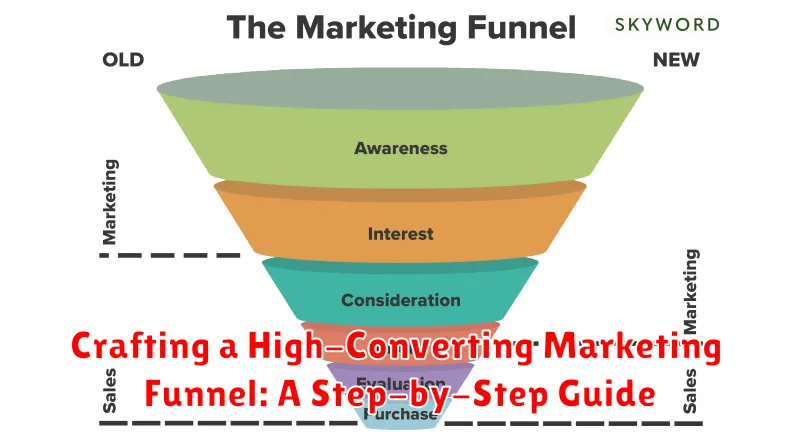In today’s competitive digital landscape, a high-converting marketing funnel is essential for any business seeking sustainable growth. This comprehensive guide provides a step-by-step approach to crafting a marketing funnel that effectively attracts, engages, and converts prospects into loyal customers. We’ll explore the key stages of a successful marketing funnel, from awareness and interest to decision and action, providing actionable strategies to optimize each step for maximum conversion rates. Learn how to tailor your messaging, choose the right channels, and leverage data-driven insights to create a high-performing marketing funnel that delivers tangible results.
This step-by-step guide will equip you with the knowledge and tools to build a high-converting marketing funnel tailored to your specific business needs. Whether you are a seasoned marketer or just starting out, this guide will offer valuable insights into the intricacies of crafting an effective funnel. From defining your target audience and crafting compelling content to leveraging automation and analyzing key metrics, we will cover every aspect of building a high-performing marketing funnel. Prepare to transform your marketing efforts and drive significant business growth with a high-converting marketing funnel.
Understanding the Marketing Funnel
A marketing funnel visually represents the customer journey, from initial awareness of your brand to the final purchase decision. It’s a crucial concept for any business seeking to optimize its marketing efforts and maximize conversions.
Think of it like a funnel: a wide opening at the top represents the largest pool of potential customers. As individuals progress through the stages, the funnel narrows, representing a decrease in the number of prospects but an increase in their buying intent. Each stage requires different marketing strategies to nurture leads and move them closer to conversion.
By understanding the marketing funnel, businesses can strategically tailor their messaging and channel selection to effectively reach their target audience at each stage.
Key benefits of understanding the marketing funnel:
- Improved lead generation
- Increased conversion rates
- Enhanced customer relationships
- Better allocation of marketing resources
Identifying Your Target Audience
Before crafting your marketing funnel, it’s crucial to identify your target audience. Understanding your ideal customer is the foundation of a successful marketing strategy. This involves defining their demographics, psychographics, and online behavior.
Demographics provide a basic understanding of your audience, encompassing factors like age, gender, location, education level, and income. These data points help create a general profile.
Psychographics delve deeper, exploring your audience’s values, interests, lifestyle, and attitudes. Understanding their motivations and pain points allows you to tailor your messaging effectively.
Analyzing online behavior provides valuable insights into your audience’s digital footprint. This includes their preferred social media platforms, online shopping habits, and content consumption patterns. This information helps you determine where and how to reach them most effectively.
Defining Your Marketing Funnel Stages: Awareness, Interest, Desire, Action
A well-defined marketing funnel uses the AIDA model: Awareness, Interest, Desire, and Action. Each stage represents a different level of customer engagement and requires a tailored approach.
Awareness
At this stage, potential customers become aware of your brand or product, often through advertising, social media, or word-of-mouth. They identify a problem or need.
Interest
Once aware, prospects become intrigued and start actively seeking information. They research solutions and compare different options, including your offering.
Desire
Now convinced of the value proposition, potential customers develop a preference for your product or service. Marketing efforts should focus on building trust and highlighting unique benefits.
Action
The final stage involves a specific action, such as making a purchase, signing up for a trial, or requesting a consultation. This stage aims to convert interested prospects into paying customers.
Crafting Compelling Content for Each Stage
Creating engaging content tailored to each stage of your marketing funnel is crucial for driving conversions. Content should resonate with the audience’s current needs and motivations, gently guiding them towards the next stage.
Awareness Stage Content
At this stage, focus on providing valuable information that addresses your target audience’s pain points. Educational content like blog posts, infographics, and short videos work well. The goal is to establish your brand as a trusted resource.
Interest Stage Content
Once prospects are aware of your brand, nurture their interest with more in-depth content. Offer eBooks, white papers, and webinars that delve deeper into specific solutions. Begin showcasing your expertise and subtly highlighting your unique selling propositions.
Desire Stage Content
Now, it’s time to foster desire for your product or service. Case studies, testimonials, and product demos are effective at showcasing the value and benefits. Focus on building trust and addressing any potential objections.
Action Stage Content
Finally, encourage prospects to take action with compelling offers and clear calls-to-action. Free trials, consultations, and limited-time discounts can incentivize conversions. Make it easy for prospects to purchase or sign up.
Leveraging the Right Channels for Each Stage: Email, Social Media, Paid Ads
Selecting the right channels for each stage of your marketing funnel is crucial for maximizing conversions. Each platform offers unique strengths and caters to different user behaviors.
Awareness Stage
Social media and paid ads are highly effective for generating initial awareness. Targeted advertising campaigns on platforms like Facebook, Instagram, and LinkedIn can reach a broad audience based on demographics, interests, and online behavior. Engaging social media content can spark curiosity and introduce your brand to potential customers.
Interest Stage
As prospects express interest, blog posts, webinars, and downloadable resources become valuable tools. Social media continues to play a role in nurturing interest through consistent engagement and valuable content sharing.
Desire Stage
Email marketing becomes increasingly important in the desire stage. Personalized email sequences can deliver targeted content that addresses specific pain points and showcases the benefits of your product or service. Retargeting ads can also effectively remind prospects of their interest and encourage them to move closer to a purchase.
Action Stage
In the final action stage, email marketing remains crucial for driving conversions. Clear call-to-actions, personalized offers, and testimonials can encourage prospects to take the final step. Paid ads can also be used for retargeting and promoting special offers to incentivize purchases.
Nurturing Leads Through the Funnel
Once you’ve captured a lead, the nurturing process begins. This involves strategically guiding them through the sales funnel, providing valuable content and building a relationship that fosters trust and encourages conversion.
Targeted Content is Key. Deliver relevant content based on the lead’s stage in the funnel. Early-stage leads benefit from educational resources, while those further down may be ready for product demos or case studies.
Multi-Channel Engagement is crucial. Utilize a mix of email marketing, social media, and potentially retargeting ads to maintain consistent communication and reinforce your message.
Personalized Communication. Address leads by name and tailor content based on their demonstrated interests or previous interactions with your brand. This creates a more personal and engaging experience.
Lead Scoring helps prioritize leads based on their engagement level and buying signals. This enables you to focus your efforts on the most promising prospects.
Measuring and Optimizing Your Funnel Performance

A crucial aspect of successful marketing funnels lies in consistent measurement and optimization. Tracking key metrics allows you to identify bottlenecks and areas for improvement within your funnel. This data-driven approach ensures your funnel remains effective and continues to generate conversions.
Key Performance Indicators (KPIs) to monitor include conversion rates at each stage, average order value, customer lifetime value (CLTV), and cost per acquisition (CPA). By analyzing these metrics, you can pinpoint where leads are dropping off and adjust your strategies accordingly. For example, a low conversion rate from the awareness stage to the interest stage may suggest a need to refine your initial messaging or targeting.
Regular A/B testing is essential for optimization. Experiment with different variations of your content, calls-to-action, and landing pages to determine what resonates most effectively with your target audience. Continuously analyze the results and implement the changes that yield the highest conversion rates.
Examples of Effective Marketing Funnels

Examining successful marketing funnels across different industries can provide valuable insights for crafting your own. Here are a few examples:
E-commerce: Free Shipping Threshold Funnel
This funnel targets increasing average order value. The awareness stage utilizes social media ads showcasing product benefits. Interest is captured through retargeting ads offering free shipping above a certain spending threshold. The decision stage involves presenting related products on the checkout page. Action is the purchase itself.
SaaS: Free Trial Funnel
This model focuses on converting users to paying customers. Awareness is built through content marketing, such as blog posts and webinars. Interest is piqued with a compelling free trial offer. The decision phase involves providing ongoing support and showcasing the software’s value. Action is the conversion to a paid subscription at the end of the trial.
Lead Magnet Funnel: Content Upgrade
This funnel concentrates on lead generation. Awareness is often generated through organic search traffic to blog posts. Interest is captured by offering a valuable content upgrade, like a checklist or template, in exchange for an email address. The decision phase involves nurturing leads with email sequences offering further valuable content. Action can vary, from signing up for a webinar to purchasing a product.

